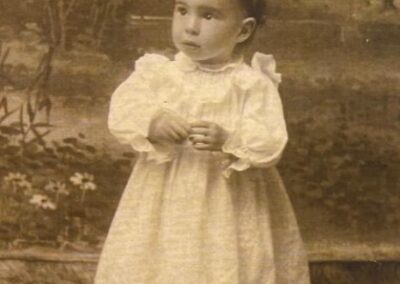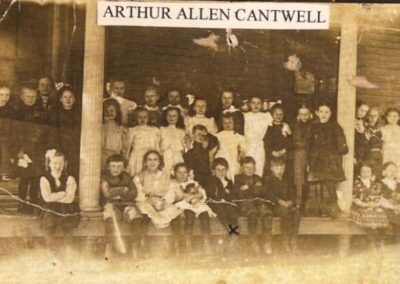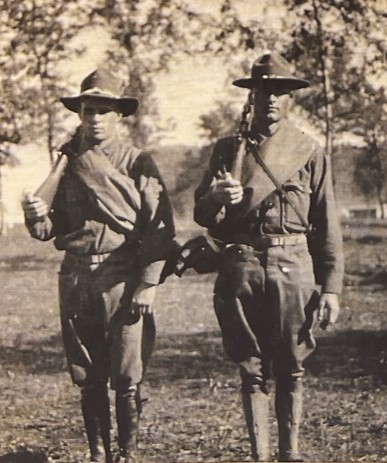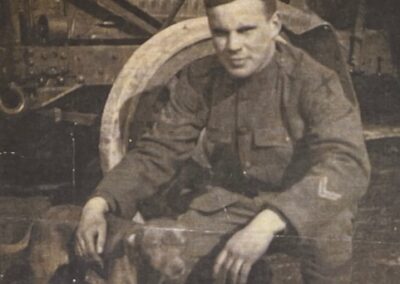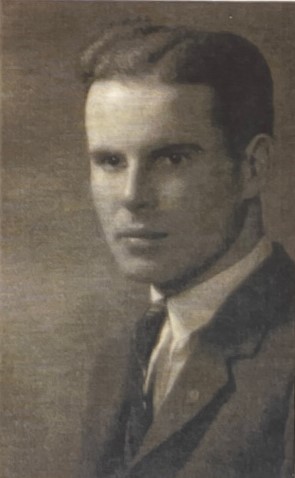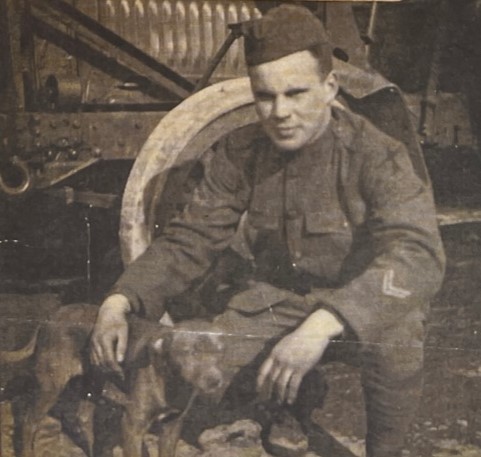
Photo Gallery
Arthur A. Cantwell
Arthur A. Cantwell – pl., Army, 4 Tk Co 107 Supply Train. Arthur Cantwell graduated from Shawano in 1917. He enlisted into Company F and was sent to Europe on the Tuscania. His ship was torpedoed by a U-Boat but he survived the sinking and the war. He came back to Shawano and worked in the Cantwell-Peterson clinic as a doctor of Obstetrics and Gynecology. He died in March of 1970.
Shawano learned a great deal about the war because he took the time to write his family. His mother saved all of his letters, handing them over to her grandson, Dr. John Cantwell, Art’s youngest son before she died. John took the time to go through all of his father’s letters and shared with us his father’s thoughts on the war from articles that he wrote for newspapers.
Dr. John Cantwell tells us…
The human story of WWI is preserved in a packet of letters my grandmother gave me before she died, letters my father wrote home from the battlefields of France.
Dad was just 18 years old, fresh off the football fields of his Shawano high school days, when he enlisted in the army.
In re-reading his letters, I sense a deep feeling of patriotism, a certain bravado that young people are blessed with, a sense of fatalism and a longing for things and people near and dear to him.
Dad faced death even before he set foot on European soil. The Tuscania, his troop ship, was torpedoed and sunk by a German U-boat on Feb. 5, 1918, in route to the front. Over 200 soldiers drowned. Fortunately, my father survived by leaping onto a destroyer that had pulled up alongside the sinking vessel.
The Tuscania was the only American troop ship torpedoed and sunk en route to battle, out of all the ships that transported some two million soldiers to France.
Once there, he faced tough battles at Chateau-Thierry, where the Germans’ thrust toward Paris was halted, and finally the Meuse-Argonne offensive, which helped end the fighting when the Germans were subdued.
One of his close friends, Eli Elefson, was killed by machine gun fire near Soissons. They played football together in high school.
On May 12th 1918, when my father was with the 107th Supply Train in Alsace, France, he wrote to his mother on Mother’s Day: Remember, Mother, if I fail to come back, I only did my duty, and someone has got to pay the price. I was a volunteer, as I thought it was my duty to go, and I’ll always think the same…..I would like to get back home again but, if fate different, I paid the price for democracy. But I will get back, if given half a chance. On July 22, 1918 he again wrote, you talk about thrills, nothing beats riding along a camouflaged road, because you are well aware what the camouflage is for. With the barrages at night, the aero flights in the day time and our steady work, you can well imagine how the time flies. I hardly ever know the day or date.
If you send me Bill Wallrich’s address I will try and locate him or at least write to him. If I know the number of his division, I will be on the lookout for him.”
Without Art’s knowledge, Lt Wm Wallrich was killed in action on the next day July 23, 1918.
He continues: While at Mezy we got the first taste of real Hun bombing (they bombed a Red Cross Hospital nearby). I never thought a fellow could get so scared as I was that night, but my pride overcame my fear and I wouldn’t run from any Hun, aviator or not. Bunches of fellows were running for dugouts but I stayed in the car. We have had many such entertainments since and I never ran either (don’t think I am bragging because I admit that I almost lost my jaw – it was on the verge of rattling off).
We were at Vic Sur Aisne – and fought with the French under General Maugin, who commanded the 10th French Army. We lost Eli this time.
The 32nd has had her share of the battles and now is marching on to the Rhine.”
Your son, Arthur Allen Cantwell

